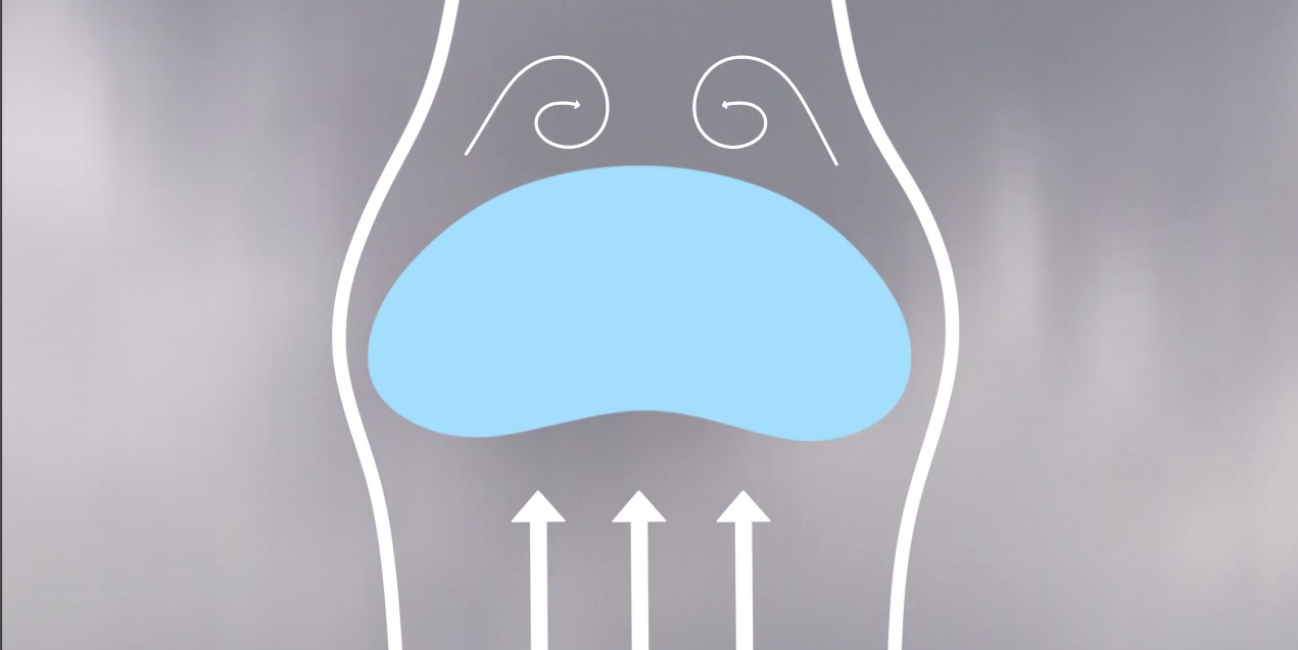
The Anatomy of a Raindrop
When asked to picture the shape of raindrops, many of us will imagine water looking like tears that fall from our eyes, or the stretched out drip from a leaky faucet. This popular misconception is often reinforced in weather imagery associated with predictions and forecasts.
Raindrops are actually shaped like the top of a hamburger bun, round on the top and flat on the bottom. A new video from the Global Precipitation Measurement mission explains why.
Download this video in HD formats from NASA Goddard's Scientific Visualization Studio
A Drop is Not a Drip
Way up high in the atmosphere, dust and smoke particles suspended in clouds create places where moisture can settle and form into drops. The drops sitting up here are like little globes of water, nearly round and spherical. Raindrops form into this shape because of the surface tension of water, which is sometimes described as a "skin" that makes the water molecules stick together. But the molecules don't form a skin. The water molecules stick together because they are more attracted to bonding with each other than they are to bonding with air. So, the water molecules in raindrops cling together, in their round little community, until…
Farewell, Cloud Country
…they start to fall. Small raindrops, less than 1 millimeter in size (less than one-sixteenth of an inch), retain a roughly rounded shape because of surface tension, but drops can collide into each other as they are falling and form bigger raindrops. Drops that are 2 to 3 millimeters (just under one-eighth of an inch) in size are big enough to be affected by air pushing against them as they fall.
Because the airflow on the bottom of the raindrop is greater than the airflow on the top of the raindrop, this creates pressure on the raindrop's bottom, and its shape becomes flattened, like a sandwich bun, or punched in, so it looks like a kidney bean.
The top remains spherical, even on bigger falling raindrops, because surface tension—those water molecules clinging to each other—is greater than the pressure of airflow above. The bigger the raindrop, the faster it falls, and the more it is affected by air pushing against its bottom. Drops that grow larger than 4.5 millimeters (about three-sixteenths of an inch) become distorted into a parachute-shape as they fall, and then eventually they break up into smaller drops.
Measuring Raindrops from Space
The upcoming Global Precipitation Measurement mission will study the sizes of raindrops layer by layer within clouds with a new advanced radar aboard the GPM Core Observatory, scheduled to launch from Japan in early 2014. The Core Observatory will has two precipitation-measuring instruments, the multi-channel GPM Microwave Imager and the Dual-frequency Precipitation Radar, designed and built by the Japan Aerospace Exploration Agency, or JAXA, and Japan's National Institute of Information and Communications Technology. Understanding the micro world of raindrops gives scientists insights into the macro world of storms.
GPM is an international satellite mission led by NASA and JAXA. It will return data on rainfall and snowfall, which will be used for weather forecasts and climate studies, as well as other applications, everywhere around the world every three hours.

